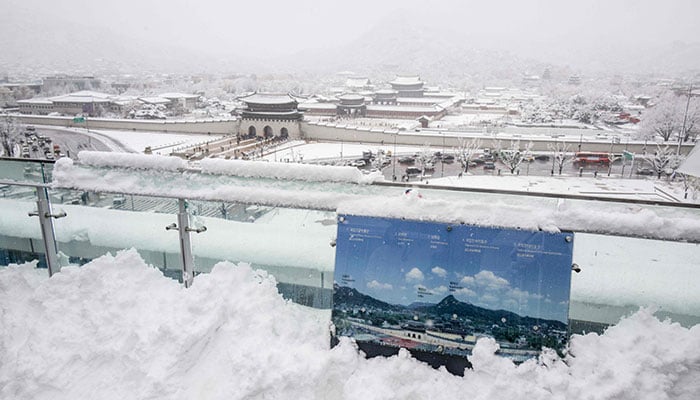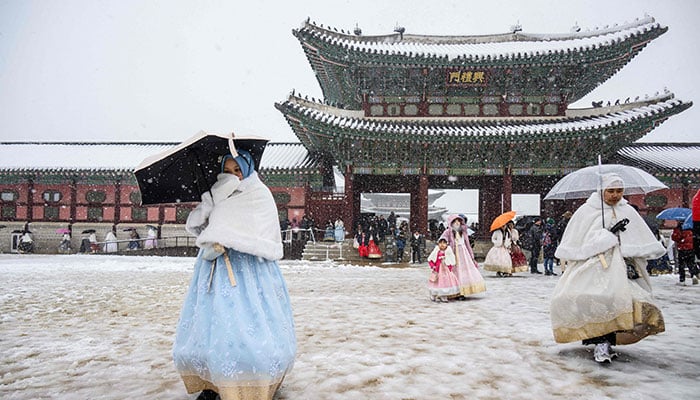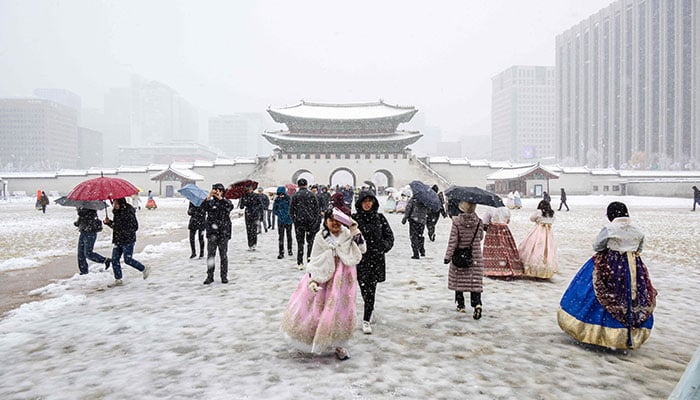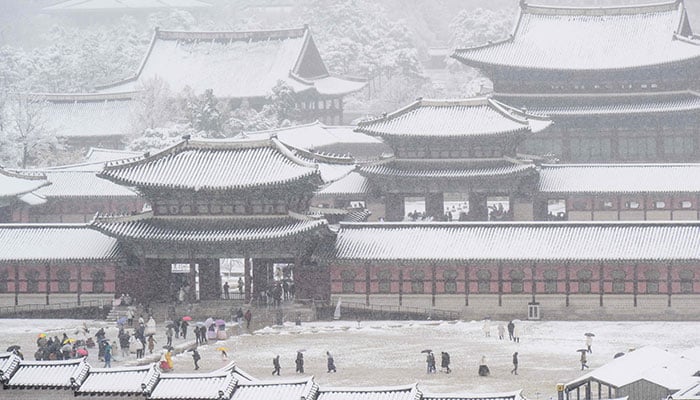
The South Korean capital was covered in the heaviest November snowfall on Wednesday since records began more than a century ago, the weather agency said.
The Korea Meteorological Administration said 16.5 cm (6.5 inches) of snow had fallen by 7:00 a.m. (2200 GMT Tuesday), compared to Seoul’s previous record of 12.4 cm on November 28, 1972.
Coincidentally, this is the first snowfall of the season in Seoul, and the highest number in November since the agency established nationwide monitoring centers in 1907.

A heavy snow warning urged residents to “refrain from driving vehicles and engaging in outdoor activities” and “beware of falling trees.”
These warnings are issued when snowfall accumulates to 20 cm or more within 24 hours.
With heavy snowfall across the country, multiple accidents occurred due to vehicles sliding on icy roads, although no serious injuries were reported.

Falling trees caused a power outage, affecting more than 150 families across Seoul in the morning.
The main roads were closed for maintenance, leading to severe traffic congestion, while at least 22 domestic flights were cancelled, and several other flights were postponed, according to the Ministry of Transport.
President Yoon Suk-yeol called on officials to “minimize potential damage and public inconvenience caused by the snow,” as heavy snowfall is expected to continue until Thursday morning.
Yoon Ki-han, director of Seoul’s meteorological department, said the heavy snowfall was caused by “the large temperature difference between the sea surface and the cold air.” Agence France-Presse.
“Moisture forms over the West Sea, and when the cold air moves from the north downward as it usually does, and if the West Sea is also cold as in previous years, the temperature difference will be smaller,” Yun said.

However, due to unseasonably warm temperatures in recent weeks, this difference has become more pronounced.
Another factor behind the heavy snowfall is that “westerly winds constantly carry strong snow, pushing it into the Seoul metropolitan area,” Yoon added.
He added, “Snow continued to fall in the same areas repeatedly, which led to greater accumulation.”
Up to 20 cm of additional snow is expected to fall around the capital, according to the meteorological agency.
